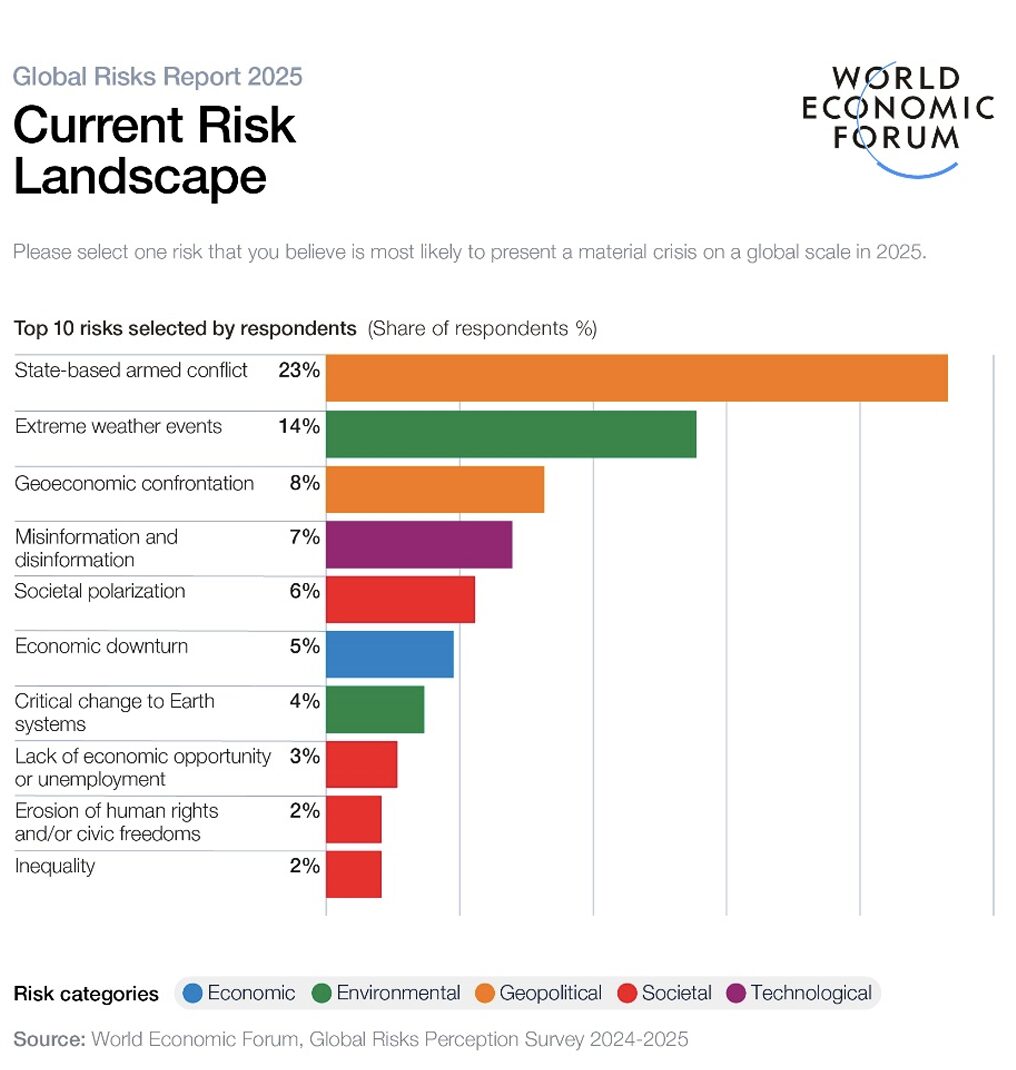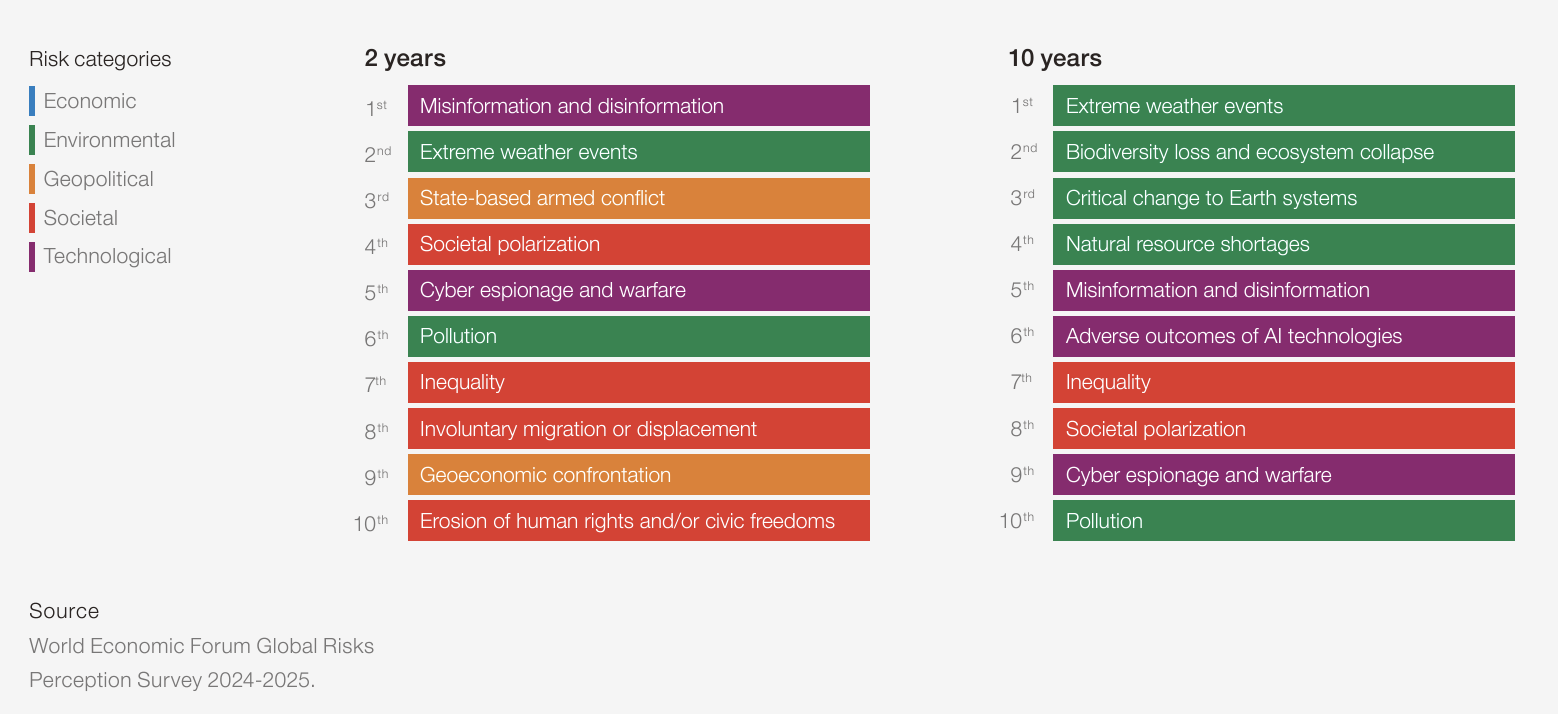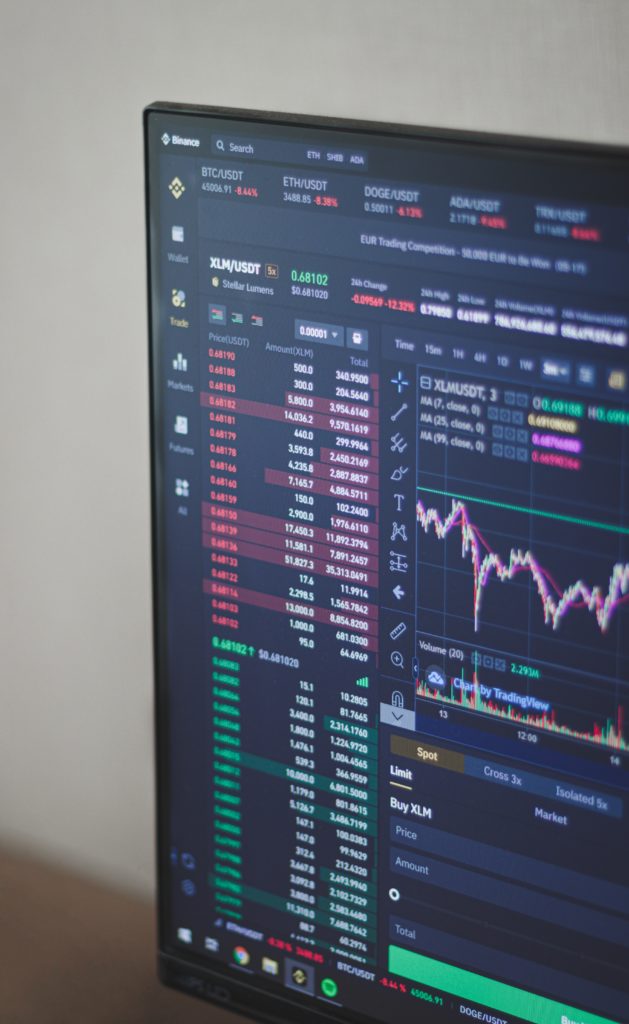Global Risks Report 2025: Armed conflict identified as greatest global risk

What is the global economy afraid of? The World Economic Forum (WEF) published the 20th edition of its annual Global Risks Report yesterday. It examines the greatest global risks in 2- and 10-year forecasts as well as the most significant general risks.
While misinformation and disinformation are among the greatest challenges in the short term, environmental risks such as extreme weather events are considered the greatest threat in both the 2- and 10-year perspective. The greatest overall risk, however, concerns a completely different area.
Overall state of affairs is “gloomy”
The WEF announced that the main problems of 2024 will continue to exist to a significant extent. At the same time, there is talk of a new and notable shift in risk perception. “Gloom is the overarching adjective that describes the overall state of things in the current, 2- and 10-year forecast ranges,” said Mark Elsner, Head of the Global Risks Initiative at the WEF.
The report is based on a survey of more than 900 experts from science, business, and politics. It sets the agenda for discussions at the Forum’s annual meeting in Davos, which this year is entitled ‘Collaboration for the Intelligent Age’. Davos is the meeting place of the World Economic Forum, where leading politicians, economic experts, and scientists meet every year to discuss global challenges.
Armed conflicts are the greatest global risk
The Global Risks Report 2025 names armed conflict as the greatest global risk, underscoring the growing division. Overall, almost 25 percent of respondents identified conflicts – including wars and terrorism – as the greatest threat to economic stability. Differences between heads of state and government are steadily increasing. This has created a new major risk. Two years ago, armed conflicts at the state level were not yet considered a major risk.
The destabilizing consequences of the Russian invasion of Ukraine and the ongoing conflicts in the Middle East and Sudan are likely to increase respondents’ concerns, according to the WEF report.

Environmental risks are increasing in the short and long term
Environmental risks were cited as the most pressing issue in 2024, accounting for five out of 10 of the biggest risks over the next decade. While environmental concerns are still considered a major risk, they have fallen to second place. The WEF notes that the environmental outlook is similar in the 2- and 10-year scenarios – after all, 2024 was the warmest year on record.
Extreme weather events are considered a major risk. They remain in second and first place in the 2-year and 10-year forecasts, respectively. Environmental pollution is seen as a more pressing short-term risk. Loss of biodiversity, resource scarcity, and ecosystem collapse are considered greater long-term threats.
Fake news is the biggest risk in the 2-year forecast
Looking at the short-term risks, countries, companies, and individuals are concerned about misinformation and disinformation. According to the WEF, this is due to the rise of fake news, the decline of fact-checking on social media, and the increase in AI-generated fakes. Fake news would help undermine trust and deepen divisions between countries.
How governments, companies, and society should deal with fake news will be the focus of the annual meeting of the World Economic Forum in Davos from January 20 to 24, 2025.
Risks in the area of economy and AI
Surprisingly, despite relatively slow global economic growth in 2024, no economic risks are represented in the top 10 of this year’s two-year risk ranking. Both inflation and economic downturn have slipped sharply. However, in the ranking of overarching global risks, economic downturn ranks 6th (see chart above).
Concerns about the negative impacts of AI technologies are low in the short term. In the 10-year time frame, the risk ranks sixth, which is probably also related to the increasing cyberattacks in 2024 as well as geopolitical fragmentation and cyber espionage.





























